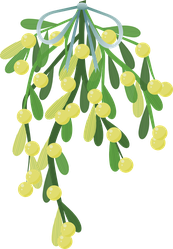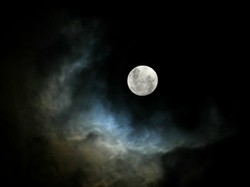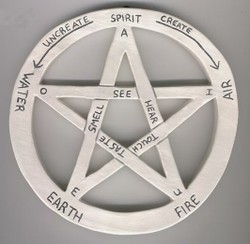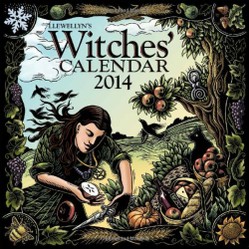The Druids' name is etymologically unclear. Some scholars think that it derives from an ancient Celtic word for oak, and this makes sense, as the druids were the priests of oaken groves who harvested the sacred mistletoe, but others derive it from an ancient Indo-European word for wisdom. The issue is unresolved. But the ancient Greeks and Romans knew of them, and observed that the order of Druids originated in Britain and spread to Ireland and Gaul. But we must remember that the when the ancients spoke of Prydain [Britain] they spoke of the whole archipelago of the British Isles, including Albion, Erin, and their associated islands. It was part of druidic lore that to fully study druidry an aspirant must therefore go to Britain, going back to the source, as it were. The Greeks , speculated that the Druids were influenced by the philosophy of Pythagorus, on account of their sharing Pythagorus' belief in reincarnation, but this belief has ancient roots that long antedate Pythagoreanism, so this view is unproven.
Our knowledge of the Druids is limited by the fact that they thought it impious to commit their lore to writing, so all their learning was preserved and transmitted orally, and as druidic studies took twenty years, there was much lore to learn. There were grades of Druidry, and for this knowledge we are indebted to the Irish, who preserved it. The basic grade was bard, and these druids were to commit to heart the vast corpus of songs. We know of the bard Taliesin, who knew the songs of Welsh druidry. Druid robes were colour-coded, with bards wearing blue, and above them the ovates, healers, who wore green. Senior druids wore white. So druids sang, healed and if senior acted as counsellors to monarchs and judged court cases. It is likely that they presided over religious rituals. Roman propaganda put about the legend that the druids used human sacrifice, but although human sacrifice was known in the bronze age Britain Isles it seems to be older than druidry, which probably is a later, Iron Age development. The question of how far druids were involved in human sacrifice is still open.
Julius Caesar met druids in Gaul, but later the druids were to get involved in a fatal clash with Rome. They seem to have objected to the Roman take over of their territories, and they therefore may have had a significant role in the revolt of Queen Boudicca, who objected to Roman behaviour, enslaving British children, stealing her tribe's possessions and raping her daughters. The Druids of the sacred isle of Mona, now also known as Anglesey, took Boudicca's side in the revolt, and the Roman general, the murderous Seutonius Paulinus, sent the ninth legion to overwhelm Anglesey. The "civilised" Romans slaughtered the Druids man, woman and child. At this point druidry falls out of British history. The Roman period simply ignores it, and the incoming Saxons had no druids. But was it really gone? In Scotland and Ireland druids still survived, and it seems possible that druidry was nourished in Wales and Scotland by its presence in ErIn.










 TheThousand Year Gardenon 11/26/2025
TheThousand Year Gardenon 11/26/2025
 Women of the Gospelson 10/11/2025
Women of the Gospelson 10/11/2025
 Religious Gardenson 08/25/2025
Religious Gardenson 08/25/2025
 Doctor of the Church: John Henry Newmanon 08/03/2025
Doctor of the Church: John Henry Newmanon 08/03/2025




Comments
Thanks
There is,but it is not easy to find,
You have great respect and tolerance of other religions.
What a lovely article BIG BRO..
Is there a page or topic search on Wizzley ? i had to find this through Google
I got this information from Nigel Pennick's book on Celtic landscapes.
The third sentence in the fourth paragraph to your third subheading, A long, quiet period, notes that "Most scholars consider his [Iolo Morganog's] account fictitious, but we cannot be certain that no genuine traditions were not transmitted, for in parallel to this there is evidence that certain families in highland Scotland were hereditary sacred funeral practitioners known as Dewars up to the nineteenth century."
Internet sources observe Dewar only as Scotch whisky!
What were "hereditary sacred funeral practitioners" and who were the Dewars and would that funerary connection be perpetrated by Dewar descendants as funeral-home employees and owner-operators?
There were only two oak species native to Britain, where druidry arose.I don't think the druids knew of other species. In Britain the sessile oak grows in Northern and western areas, so it is likely that some druids used only the oak that grew in their own area.
The first paragraph under your first subheading, Ancient Druidry, comments that "druids were the priests of oaken groves."
Is there any one oak species associated with ancient druids? Would the druids look for lands that already had those species or would they be willing to plant those species where they already were not growing?
There is non evidence for this idea, but I suspect that many ancient Britons used wool or natural plant fibres,such as nettle,or if they were well off,linen.
It's interesting to consider what a people so appreciative of woody plants and their products would wear.
Online sources mention that 1-plus million garments sold as paper, throwaway clothing between 1966 and 1968.
Would it be possible that the ancient Druids were the foreshadowers of paper and recyclable clothing?